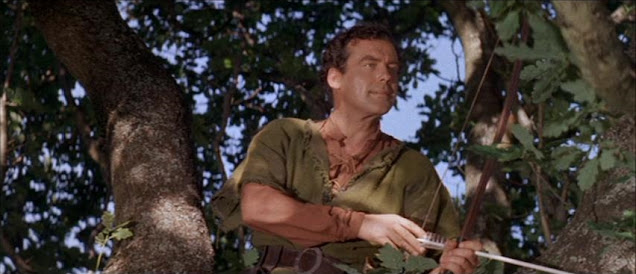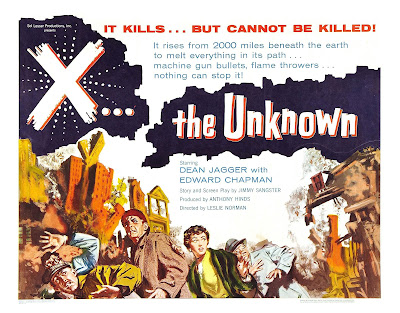(1961) Directed by Terence Fisher; Written by John Elder
(aka: Anthony Hinds); Based on the novel The
Werewolf of Paris, by Guy Endore; Starring: Oliver Reed, Clifford Evans, Yvonne
Romain, Catherine Feller and Anthony Dawson; Available on DVD
Rating ****½
“A werewolf is a body
with a soul and a spirit that are constantly at war.”
– The Priest (John
Gabriel)
Of all the classic movie monsters, the werewolf is perhaps
the most tragic because of its inherent fatalistic nature. The best films in
this subgenre have typically emphasized the destructive path someone stricken
with this curse is destined to follow. The werewolf is doomed to repeat a cycle
of transformation and an unquenchable compulsion to kill. The change from human
to lycanthrope strips away the veneer of civilization, revealing the savage
beast underneath. Hammer films’ inimitable take infused life into the venerable
werewolf myth. The Curse of the Werewolf was
directed by the versatile Terence Fisher, while screenplay chores (working from
Guy Endore’s novel) were handled by producer Anthony Hinds, working under the
pseudonym John Elder. As with many previous Hammer efforts, the film endured a push-pull
battle between various censorship boards, and the finished product suffered
numerous cuts.
Set in 18th-century Spain,* The Curse of the Werewolf begins with a rather lengthy prologue, providing
a sketchy explanation of how the title creature came into being. In an early
scene, the cruel Marques Siniestro (Anthony Dawson) humiliates a beggar
(Richard Wordsworth), and imprisons him for life. For reasons never explained, the
beggar gradually takes on wolf-like properties. He rapes a mute servant girl (Yvonne
Romain), but she manages to escape. The pregnant young woman eventually finds refuge
with a kindly couple, Alfredo and Teresa (Clifford Evans and Hira Talfrey), but
dies after childbirth.
* The story’s location was changed from France to Spain in
order to re-purpose a Spanish village set, originally intended for the
un-filmed Hammer production The
Inquisitor (The Hammer Story, by
Marcus Hearn & Alan Barnes).
Unlike many werewolf films where the main character’s
origins can be traced to some sort of attack, Hammer’s version features a child
cursed at birth. His only sin is to be born on December 25th, which Teresa
observes as “an insult to heaven.” As Leon (Justin Walters, who resembles a
younger version of the lead actor) matures, he begins to have recurring dreams
about transforming into a werewolf and killing animals, but can’t seem to remember
his restless nocturnal activity, prompted by the full moon. Alfredo and Teresa
try to shelter him from the ensuing commotion about a rogue wolf roaming the
village, and consult a priest for help. Only the love of a woman, they learn,
can quell Leon’s impulses. Years pass, seemingly without incident, until Leon
is a young man (Oliver Reed), and leaves home to find his way in the world.
Reed demonstrates tremendous range as the adult Leon,
grappling with his inner torment. His dilemma serves as a metaphor for the post-adolescent
struggle to control one’s baser impulses and integrate into society. At every
turn the odds of having a normal life seem stacked against him. He falls in
love with Cristina (Catherine Feller), who in turn loves him back. Their love
is doomed from the start, however, because she’s his employer’s daughter, and engaged
to marry a snooty aristocrat. To make matters worse, his old behavior
resurfaces after a night on the town with his friend, resulting in an unbridled
killing spree. As Leon, Reed compares favorably to Lon Chaney Jr.’s tortured Lawrence
Talbot in The Wolf Man and David
Naughton’s melancholy, tragicomic performance as David Kessler in An American Werewolf in London. We feel
for his terrible predicament, which can only end in pain and sorrow. He’s powerless
to fend off his urges, and avoid the inevitable consequences that await him. He
rejects the priest’s admonition to be locked away in a monastery, where he can
no longer harm anyone. While we can hardly blame Leon for refusing to avoid the
rest of society or abstain from worldly pleasures, we know his fate is sealed. The
fact that his fate has been preordained does little to stop our wishing that it
wasn’t so. Roy Ashton’s excellent werewolf makeup enhances Reed’s performance
as a creature caught in limbo, achieving an ideal balance between understated
and overdone.
The Curse of the
Werewolf’s title creature gets comparatively little screen time, but his
appearance is no less memorable. Although we don’t get a good look at the
creature until the climax, his influence is felt throughout. The entire film is
dominated by an all-encompassing atmosphere of sadness, and a pervasive fatalistic
streak that establishes Leon’s destiny. Due to its downbeat tone, and possibly
because it didn’t spawn a host of sequels, The
Curse of the Werewolf often gets overlooked in comparison to other Hammer monster
movies, but it boasts one of the best
cinematic depictions of a werewolf, and deserves to be held in similar regard.



























